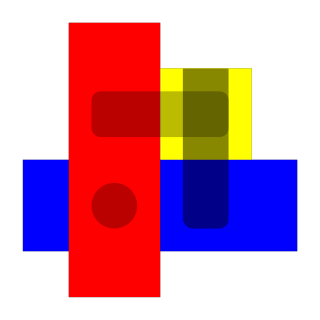Top Qs
Timeline
Chat
Perspective
Rietveld joint
Type of joint in furniture-making From Wikipedia, the free encyclopedia
Remove ads
A Rietveld joint, also called a Cartesian node in furniture-making, is an overlapping joint of three battens in the three orthogonal directions.
This article needs additional citations for verification. (January 2023) |

Remove ads
Description
A Rietveld joint is an overlapping joint of three battens in the three orthogonal directions. It was a prominent feature in the Red and Blue Chair that was designed by Gerrit Rietveld. In Gerrit Rietveld's furniture, many of these joints were doweled, meaning that the adjoining faces were connected with glued wooden pins. The first two connections were made by boring a hole about 1 mm deeper than the dowel length, but the third connection was made with a longer dowel, boring through a batten, leaving a circular mark that had to be painted over.[1]
Remove ads
History
Rietveld joints are inextricably linked with the early 20th century Dutch artistic movement called De Stijl (of which Gerrit Rietveld was a member), a movement whose aims included ultimate simplicity and abstraction. This led to the movement's three-dimensional works having vertical and horizontal lines that are positioned in layers or planes that do not intersect, thereby allowing each element to exist independently and unobstructed by other elements and giving a piece a visually raw and simplified look.
Remove ads
References
Wikiwand - on
Seamless Wikipedia browsing. On steroids.
Remove ads
